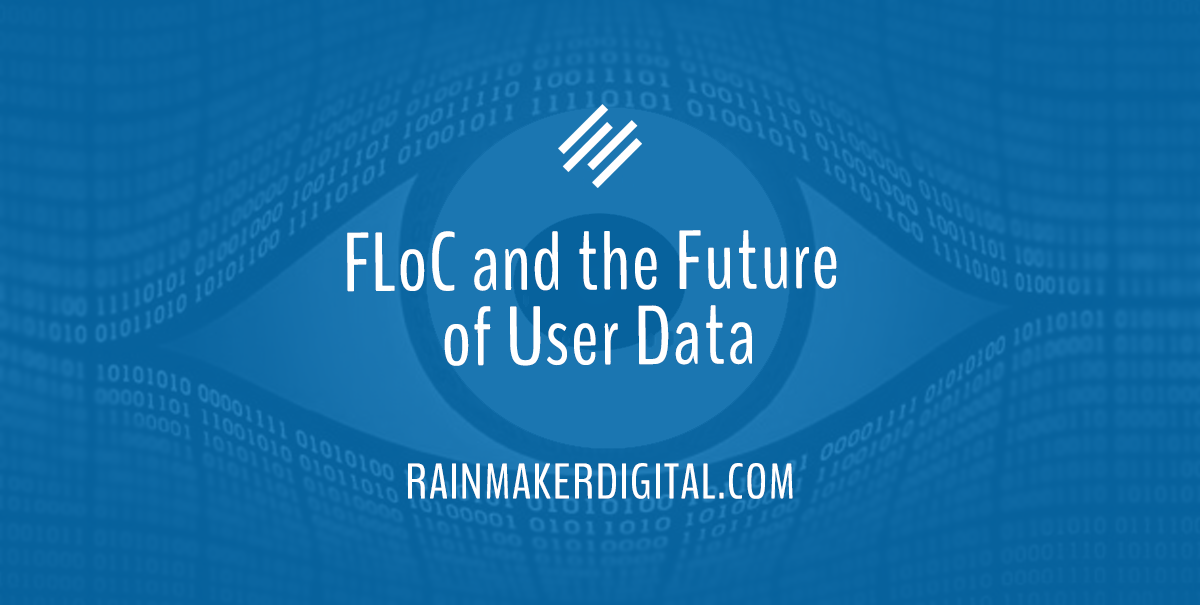
Online privacy is becoming a battleground.
Top tech CEOs have been brought before Congress to participate in hearings about user data and privacy. Tracking and targeting capabilities that flew under the radar for years are now being openly debated.
Tracking technology has revolved around third-party cookies for years, but times are changing. Browsers have banned them as their potential for abuse has become clear. It’s hard to say what will replace third-party cookies, but several top technology companies are starting to develop alternatives.
Google’s FLoC is at the forefront of this pack.
You’ve probably heard the term “Federated Learning of Cohorts,” or FLoC, but do you know what it means? You need to understand what it is, why it matters and how it will change tracking data.
What is “Federated Learning of Cohorts?”
“Federated Learning of Cohorts” is a name that explains exactly what the technology does. A federation is an organization made of smaller autonomous groups (for example FIFA, which runs world soccer as the central authority over world soccer leagues). Learning refers to the technology’s purpose of understanding user behavior. Cohorts are simply groups of similar users.
FLoC is a system of smaller groups all organized by one central authority. It’s designed to safeguard each user’s privacy in a way that traditional third-party cookies can’t.
How FLoC is Different
Traditional tracking technologies allow a user to be tracked individually from website to website. A particular action like a “like” button, purchase or other indication of interest lets a website place a script on the user’s computer.
The third-party cookie technology keeps track of a user’s browsing preferences and the sites they visit. The data is sent back to the original website owner to use to understand the user’s behavior online. If you’ve noticed a particular ad following you from place to place on the Internet, you’ve experienced third-party cookie tracking.
This has obvious privacy concerns, and the data is highly identifiable. It’s also stored on the server side which means that the company tracking the data has a vast centralized database of individual user data that it can monetize.
FLoC seeks to eliminate privacy concerns. When a user visits a site, FLoC still records the activity, but those actions are not shared with a third party straight away. FLoC stores the user data for every domain visited locally on the computer, not on the cloud. An algorithm called SimHash is used to encode it. SimHash’s name comes from “similar” or “similarity” hashing, the process of finding similarities between two data sets. This algorithm creates a “cohort” of several thousand users based on similar domains visited.
This cohort’s data is treated as one unit for the purposes of FLoC, hiding the individual data in a larger group persona. The user gains anonymity from being part of a larger group, much like a single zebra blending into the herd.
The fact that individual user data is stored and encoded locally adds to the security. This change in storage matters — server-side data storage has led to issues like the Cambridge Analytica scandal, where a firm used data harvested from Facebook to create incredibly specific targeting profiles.
Tracking Technology Must Evolve
Governments and private citizens are realizing how much data people are giving away. As public opinion has changed, governments are creating legislation like California’s CCPA or the EU’s GDPR to protect user data and privacy.
Third-party cookies are being driven out — but modern Internet advertising is built on user data, and the industry needs an alternative to cookies. Apple and Facebook are working on their own solutions, but Google is in a unique position to get ahead of the pack due to its dominance even across platforms.
Chrome holds a 65% browser share worldwide and Google Search holds a 92% market share. This technical titan has a chance to further extend its dominance and satisfy privacy advocates through the FLoC model.
FLoC is Already Under Fire
We’re at an interesting crossroads right now with privacy advocates and tech companies clashing. People have been giving up privacy for convenience for many years. The tension between privacy and convenience has always been there, but it’s intensifying.
The Electronic Frontier Foundation (EFF) is already raising concerns about FLoC, worried that the way it gathers data may clear the way for even more invasive techniques like browser fingerprinting. With time, many privacy-conscious organizations fear that it might be possible to cross-reference cohorts to build a complete picture of an individual user. Google is delaying the roll-out of FLoC in Europe due to fears it may run afoul of GDPR, and Europe is raising antitrust concerns already.
But whether FLoC succeeds or not, it is at least an indication that things are changing. Big Tech doesn’t necessarily care about privacy, but they care about public perception and government interference. Whoever builds the dominant third-party cookie replacement in the next couple of years will shape the discussion.
Public opinion has shifted against invasive targeting, and the time for a new solution is at hand. FLoC is an interesting start, but that’s what it is — a start.
FLoC Is a Harbinger
FLoC is an innovative solution to the question of tracking vs. privacy. It’s not without its own problems, but it could represent a sea change in how we process user data: from server side to user side, from individual to group.
Keep an eye on Google’s efforts, because tracking as we know it is about to change. FLoC is only part of a broader movement, and the next few years will show us where the industry is headed.
Trying to build a targeted marketing strategy of your own? You don’t need to go it alone. If you need a little help, just drop us a line, anytime.
Best Regards,
Ed Bardwell
President
Rainmaker Digital Services